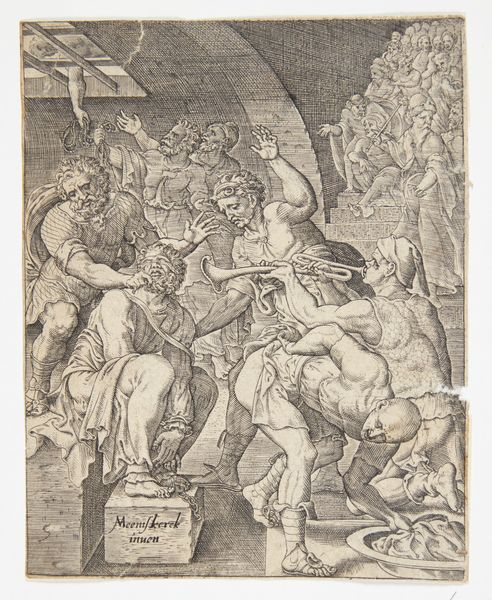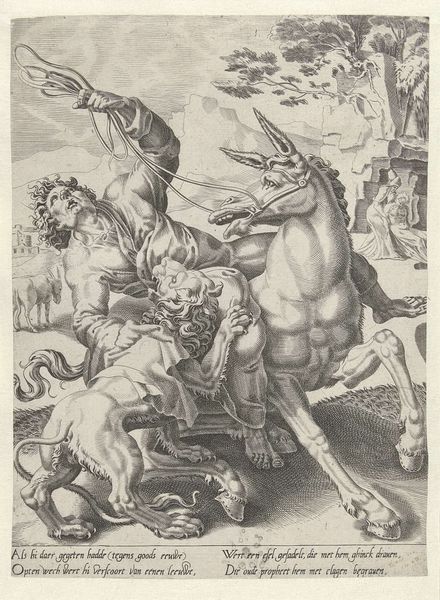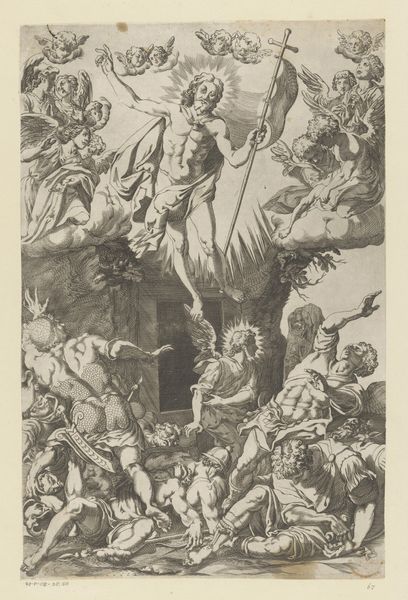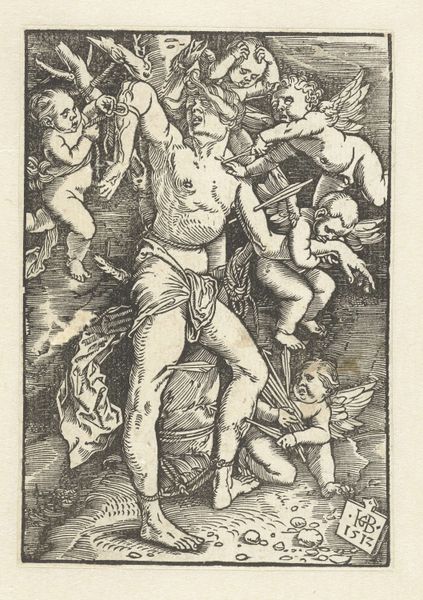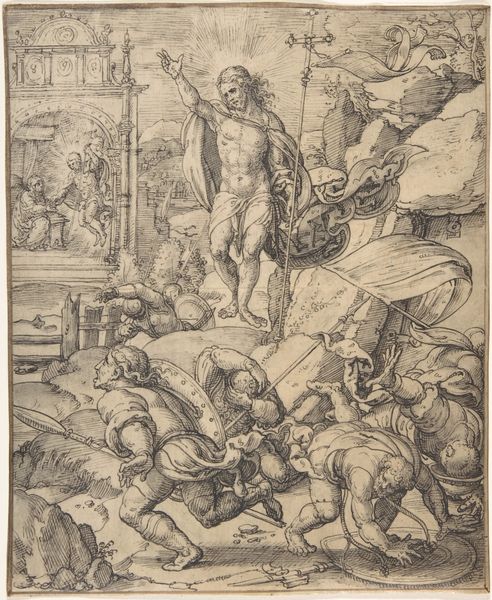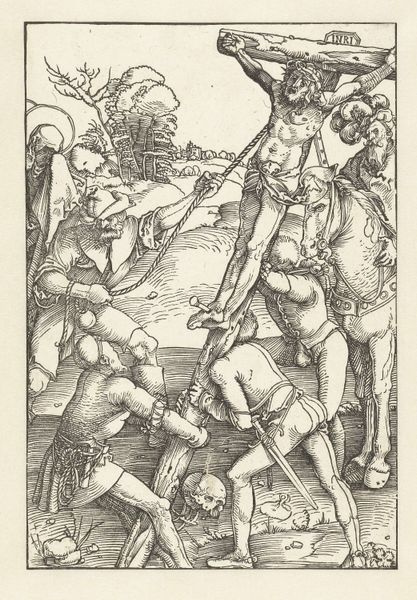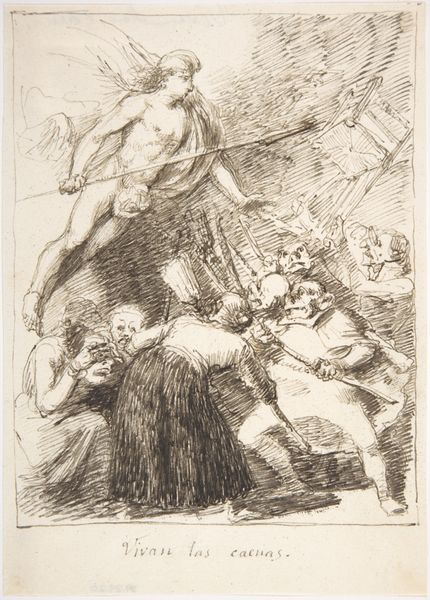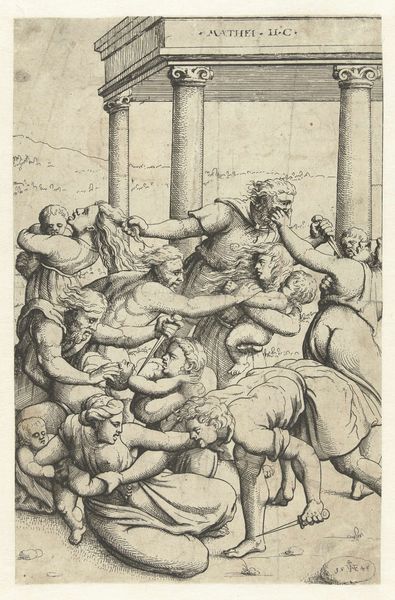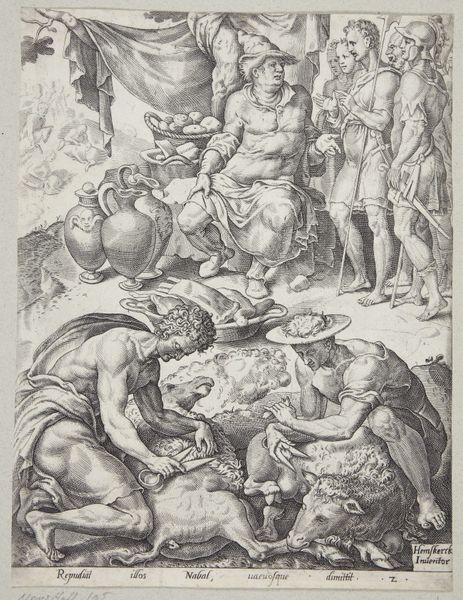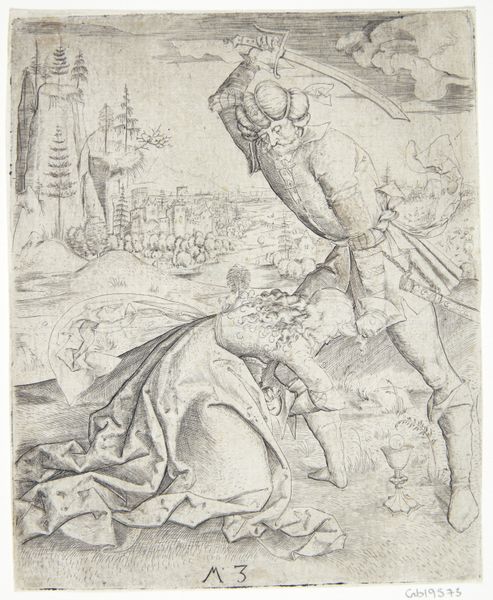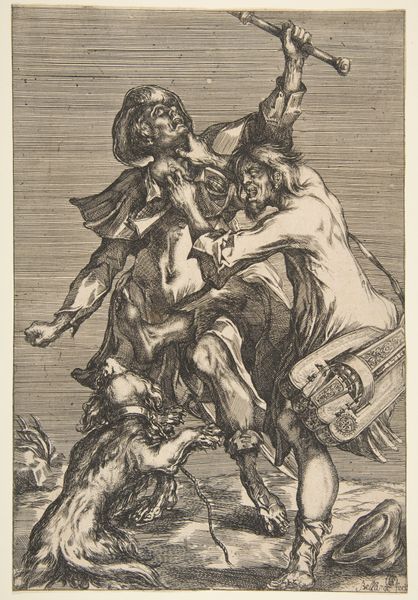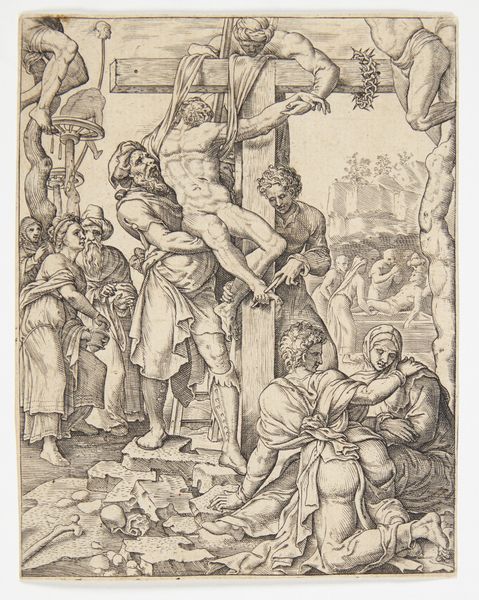
#
light pencil work
#
ink drawing
# print
#
pen sketch
#
pencil sketch
#
personal sketchbook
#
ink drawing experimentation
#
pen-ink sketch
#
sketchbook drawing
#
sketchbook art
#
fantasy sketch
Dimensions: 115 mm (height) x 71 mm (width) (bladmaal), 115 mm (height) x 71 mm (width) (plademaal)
Albrecht Dürer made this striking image of a witch riding backwards on a goat as a black-ink engraving. It offers insight into the complex relationship between art, folklore, and social anxieties in 16th-century Europe. Dürer's image is rife with symbolic inversions: the witch rides a goat, an animal associated with the devil, backwards, against the natural order. Surrounded by playful putti, she holds a distaff, a tool associated with female labor. The image reflects the period’s widespread belief in witchcraft. The witch embodies the fears and stereotypes of the time, while the putti suggest a topsy-turvy world where traditional values are upended. Dürer, however, was deeply interested in classical art and the Italian Renaissance. Engravings like this would have circulated widely, reinforcing ideas about outsiders who threatened the social order. Understanding such images requires careful examination of period sources, like pamphlets or legal documents. These help us understand the social and institutional context that shaped artistic production and consumption.
Comments
No comments
Be the first to comment and join the conversation on the ultimate creative platform.
